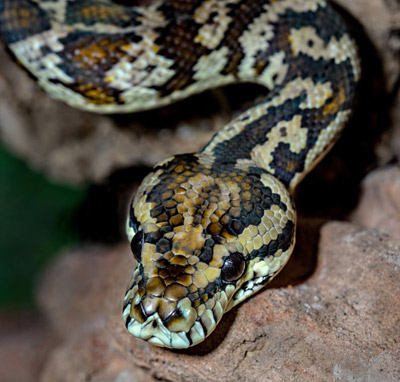
Nature Facts
Central Carpet Python
Facebook

Behold, I send you forth as sheep in the midst of wolves: be ye therefore wise as serpents, and harmless as doves.
Behold, I give unto you power to tread on serpents and scorpions, and over all the power of the enemy: and nothing shall by any means hurt you.
Location:
- Lives in open forests, rainforests, coastal heaths, rural lands, park lands and suburban gardens. This species is widespread and found throughout northern, eastern and southern Australia
Habits:
- This snake is active both day and night and can be encountered on the ground, in trees or buildings (particularly chicken pens, barns and attics).
- The Python feeds on frogs, lizards, birds, mammals.
- Cane Toads are sometime taken as prey with fatal consequences for the snake.
- As with other python species, the jungle carpet python lays a clutch of eggs which the female incubates by coiling around them and shivering her muscles to keep them warm.
Color:
Carpet snakes are extremely variable in color and pattern. Most are olive green, with pale, dark-edged blotches, stripes or cross-bands. The juveniles are similarly patterned, but often in shades of brown rather than olive green. A row of deep pits can be seen along the lower jaw and many small scales are present on the top of the head. This species can grow to 10 feet (3 meters) in length.
Central Carpet Python Quick Facts:
- Carpet Pythons are native to Australia and New Guinea.
- Feeds on frogs, lizards, birds, and mammals. They trap the prey until it suffocates.
- Most Carpet Pythons are olive green, with pale dark edged blotches. The youths are often shades of brown.
- They can live 15-20 years.
- There are six types including; Jungle Carpets, Coastal or Queensland Carpets and Irian Jaya Carpets.
- They can range in size from 5 to 9 feet.
- When kept as a pet the aquarium needs to be kept at 78-82 degrees.

Photos by David Clode on Unsplash


